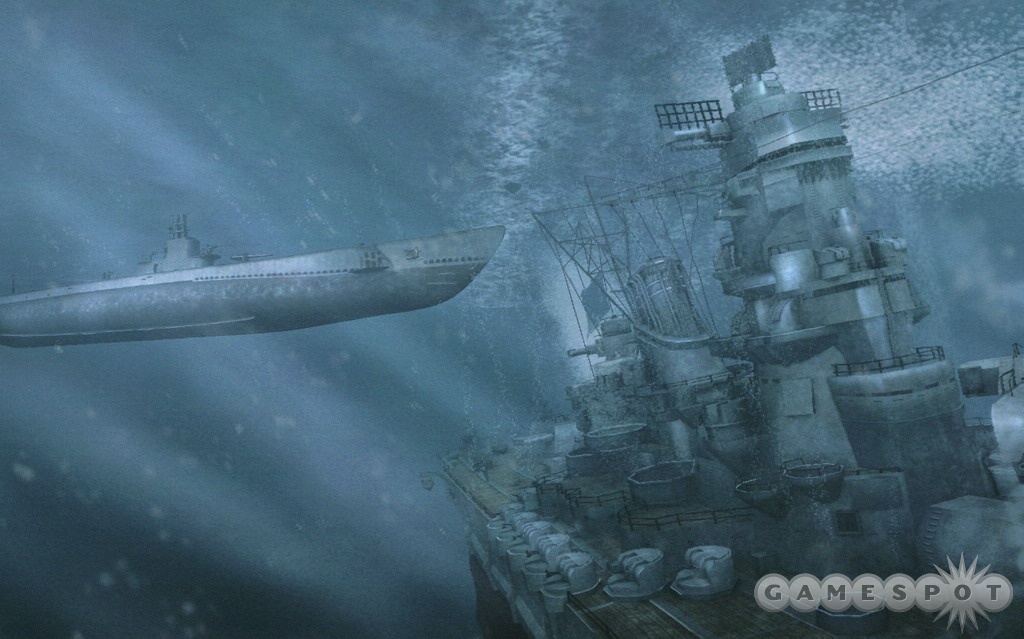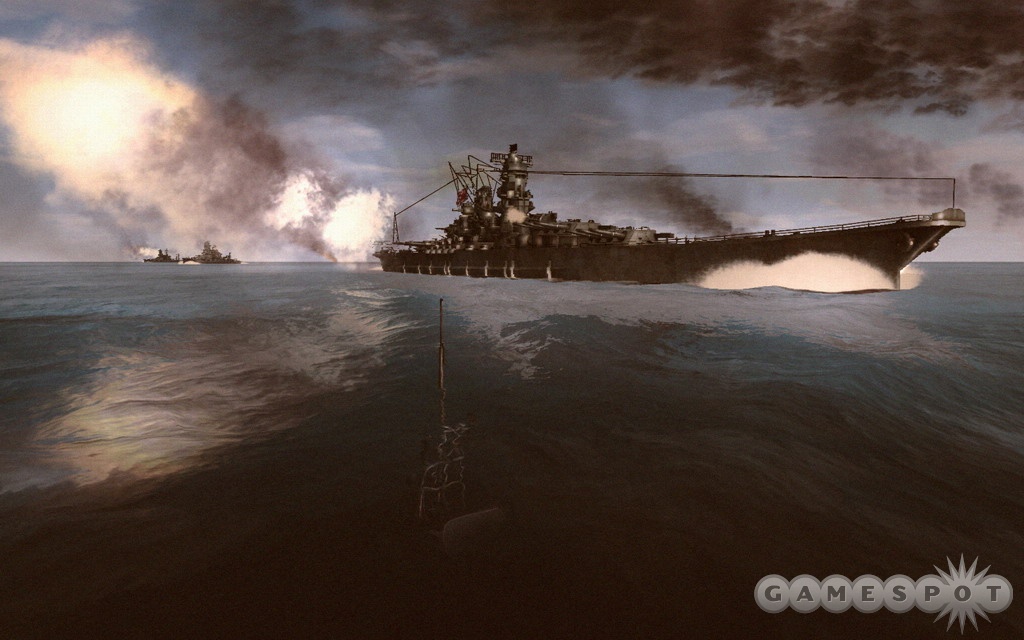Silent Hunter 4: Wolves of the Pacific Single-Player Hands-On
The latest version of this acclaimed submarine simulation will let you captain WWII submarines in the war against Japan. We take an exclusive look.
2005's Silent Hunter III was the most accurate submarine simulation to date. It was pretty much also the last serious submarine simulation. Once a fairly robust genre, the sub genre has dwindled down to Ubisoft's excellent Silent Hunter franchise. So Ubisoft deserves props for keeping the genre alive. Now the company is prepping the next game in the series, Silent Hunter 4: Wolves of the Pacific. As you can probably tell from its name, this one will let you command American submarines during World War II in the campaign against Japan. We got a chance to sink a few merchantmen ourselves while checking it out.
What Silent Hunter III did for Nazi Germany's Kriegsmarine, Silent Hunter 4 will do for the US Navy. Instead of becoming a U-boat captain and prowling the Atlantic for convoys to sink, like you did in the previous game, you'll be able to take charge of a variety of American submarines and patrol the Pacific looking for targets. While the submarine campaign in the Pacific is often overlooked, the fact remains that American submarines played a pivotal role in cutting Japan off from its overseas resources.

The game features a campaign that covers the length of the war. You'll be assigned a sub, as well as a randomly generated crew, and set out to sea on patrol. Where you go will be up to you, but you'll most likely want to head to populated shipping lanes. The campaign isn't fully dynamic, in the sense that the rest of the war is being simulated around you, but there will be a logic to the world. This means that if you submerge yourself outside a Japanese port long enough, you might see an enemy battleship returning home. Or if you put yourself in a shipping lane, odds are you'll encounter an enemy convoy. A neat aspect of the campaign is that the better you do, the more likely you'll be sent on challenging and difficult missions by command.
Like its predecessors, Silent Hunter 4 can be a highly realistic game about submarine warfare, but you can adjust the difficulty and realism settings to make it much easier to learn and play. Micromanagers will appreciate that they have much more control over their crew because you can assign officers and sailors to different compartments of the submarine (such as the engine room or torpedo room), designate a compartment leader, and assign men to different watches. But if you don't want to hassle with any of this and just want to sink submarines, you can do that too. Still, if you want to maximize your submarine's performance, you might want to keep an eye on your men. Each sailor has his own set of skills, and these skills can improve over time. So you might want to station a crewman with excellent watch skills to the tower where he can spot enemy ships or aircraft rather than putting him in the engine room where he can't see a thing.
The business of submarines is to sink enemy vessels, and, again, this can be as realistic a process as you want or as simple as point-and-click. Once you encounter an enemy convoy or ship, you can approach the engagement in different ways. Do you stay submerged and try a surprise attack? If there are no escorts, you could surface and use your deck guns. If there are escorts, you might need to maneuver through their protective screen to get at your targets. Or you could simply sink the escort and pick off its flock afterward.
At its most realistic level, computing a firing solution for a torpedo is very authentic. For instance, using the periscope, you must identify the target by consulting the ship identification books that submarines carry. Once you have the ship class, you can calculate the height of the vessel, which helps determine range and speed. This and various other data get fed into the mechanical torpedo computer, and then you can fire a torpedo. If you're a more casual player, this may seem overwhelming. But at the more casual simulation settings, all you have to do is lock on to the target in your periscope, and the game handles the rest. Then you can fire the torpedo, switch to a third-person view, and watch as it impacts your target.

In addition to the campaign game, Silent Hunter 4 will have the same set of gameplay modes as its predecessor. A battle mode will let you participate in historical battles if you just want to get in and sink ships quickly, while a multiplayer mode will let you play with others online as you sink ships together.
Silent Hunter III was a gorgeous game, and Silent Hunter 4 raises the bar even higher with new features, such as transparent water and postprocessing effects. The latter add a lot of atmosphere and grit to the visuals, and with them turn on it's a big visual leap from Silent Hunter III. The submarines and vessels are also modeled to sharp detail. Watching the waves lap over your periscope while you're locking onto an enemy destroyer is an immersive experience. Battles look even better. We encountered a huge battle between Japanese battleships and American escort carriers in one mission (based on an actual battle during the war) and watched the combat unfold in a cinematic fashion. Silent Hunter 4 looks like a worthy successor to the acclaimed series and is due out in March.
Got a news tip or want to contact us directly? Email news@gamespot.com
Join the conversation